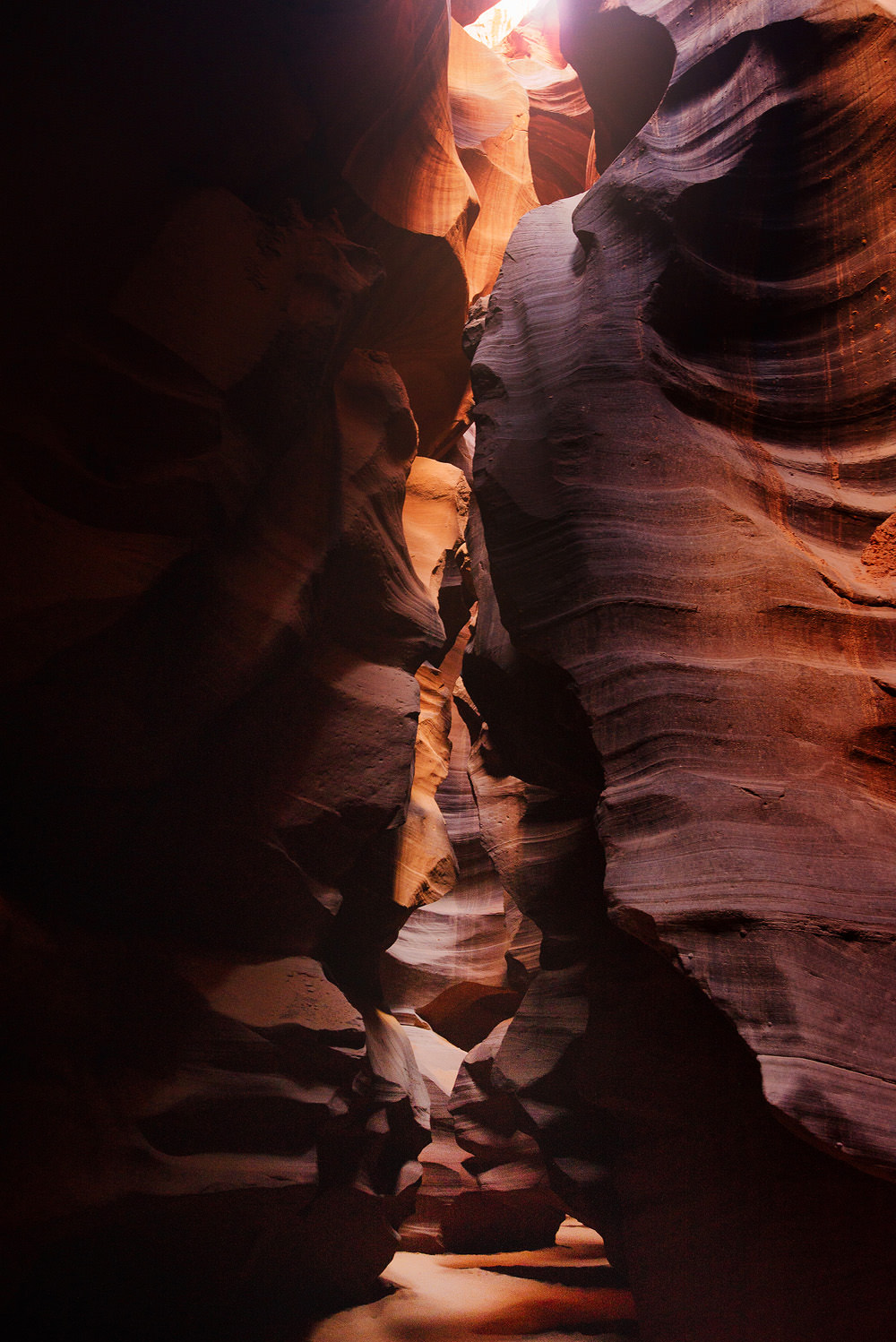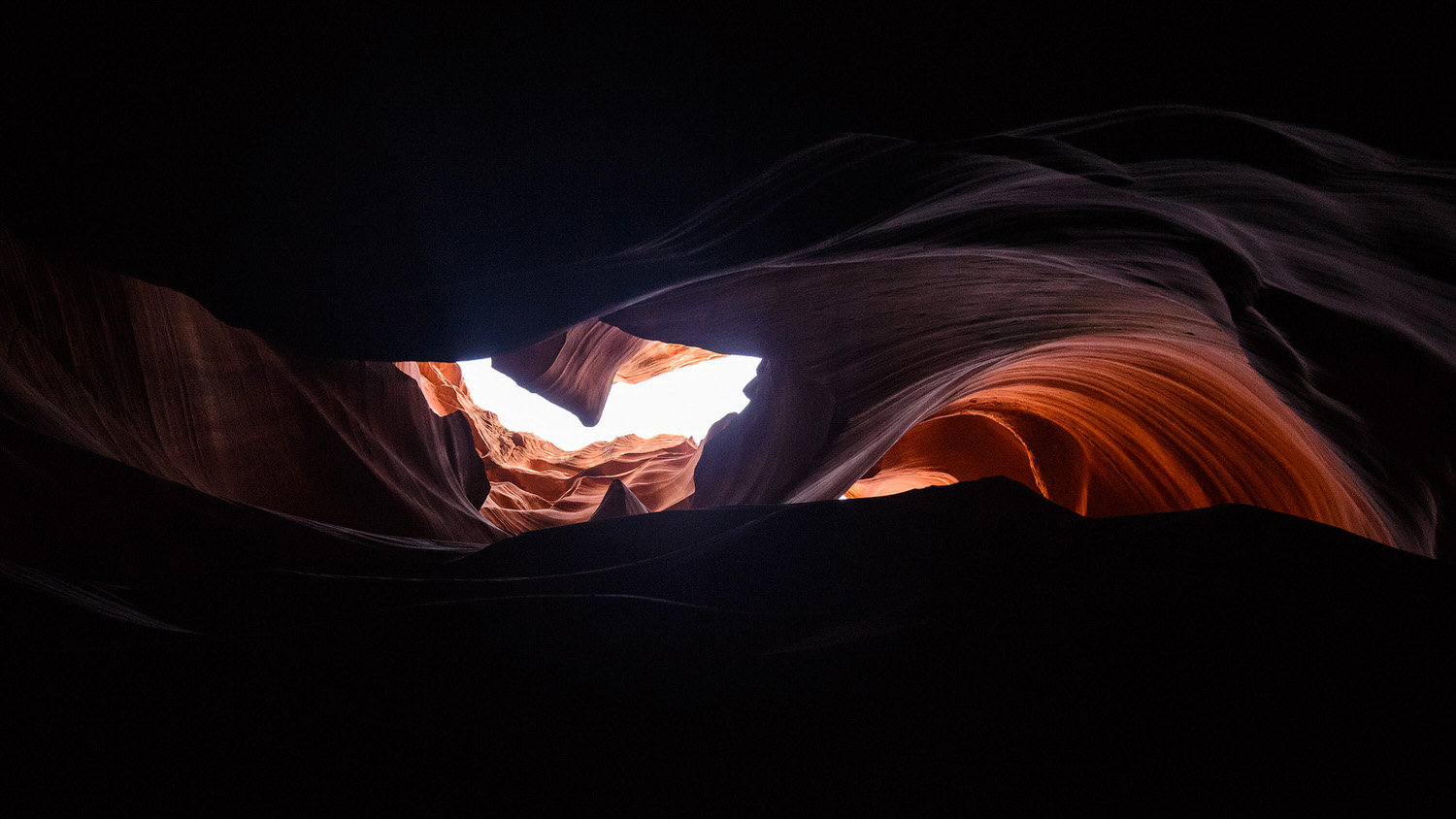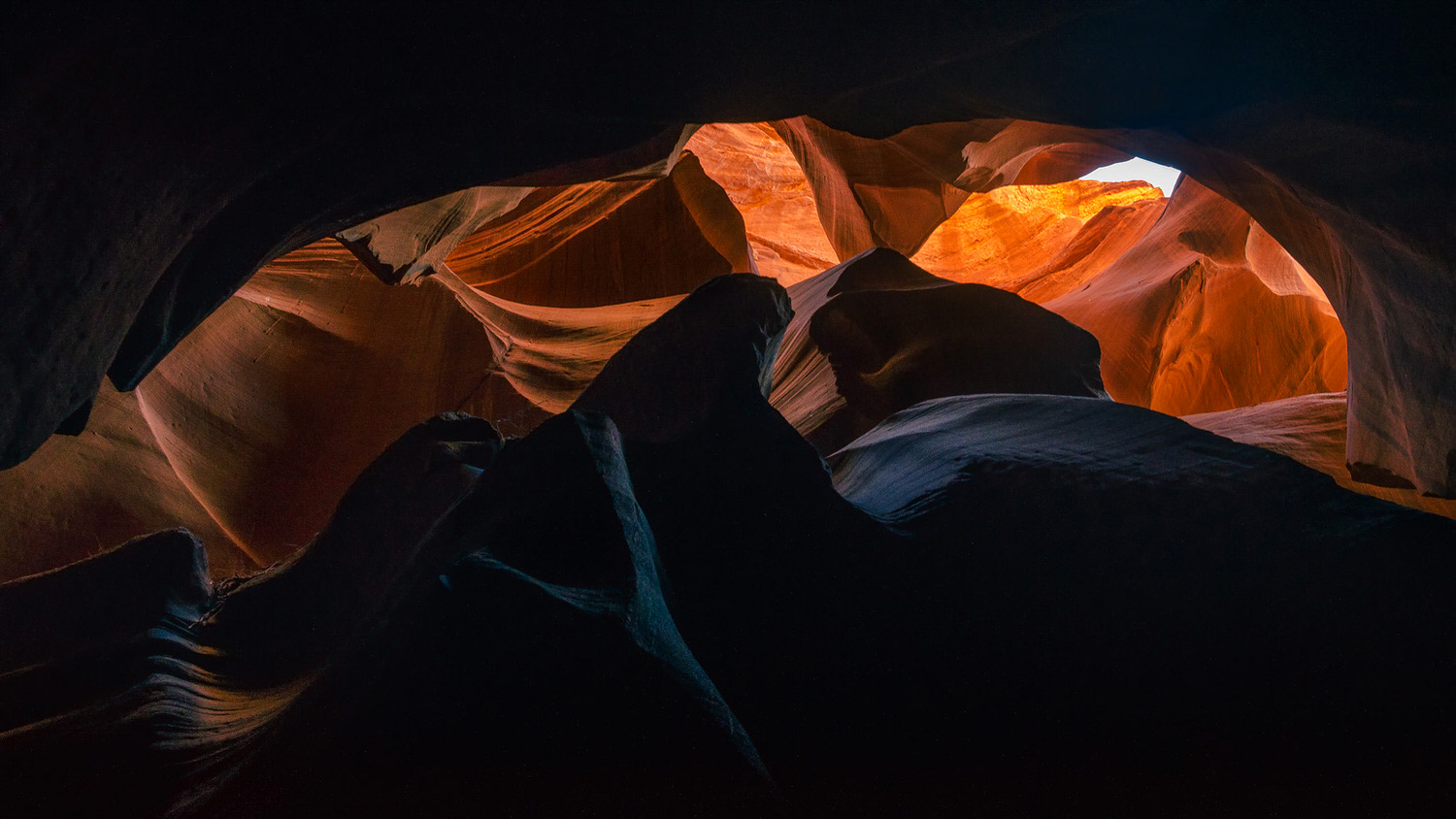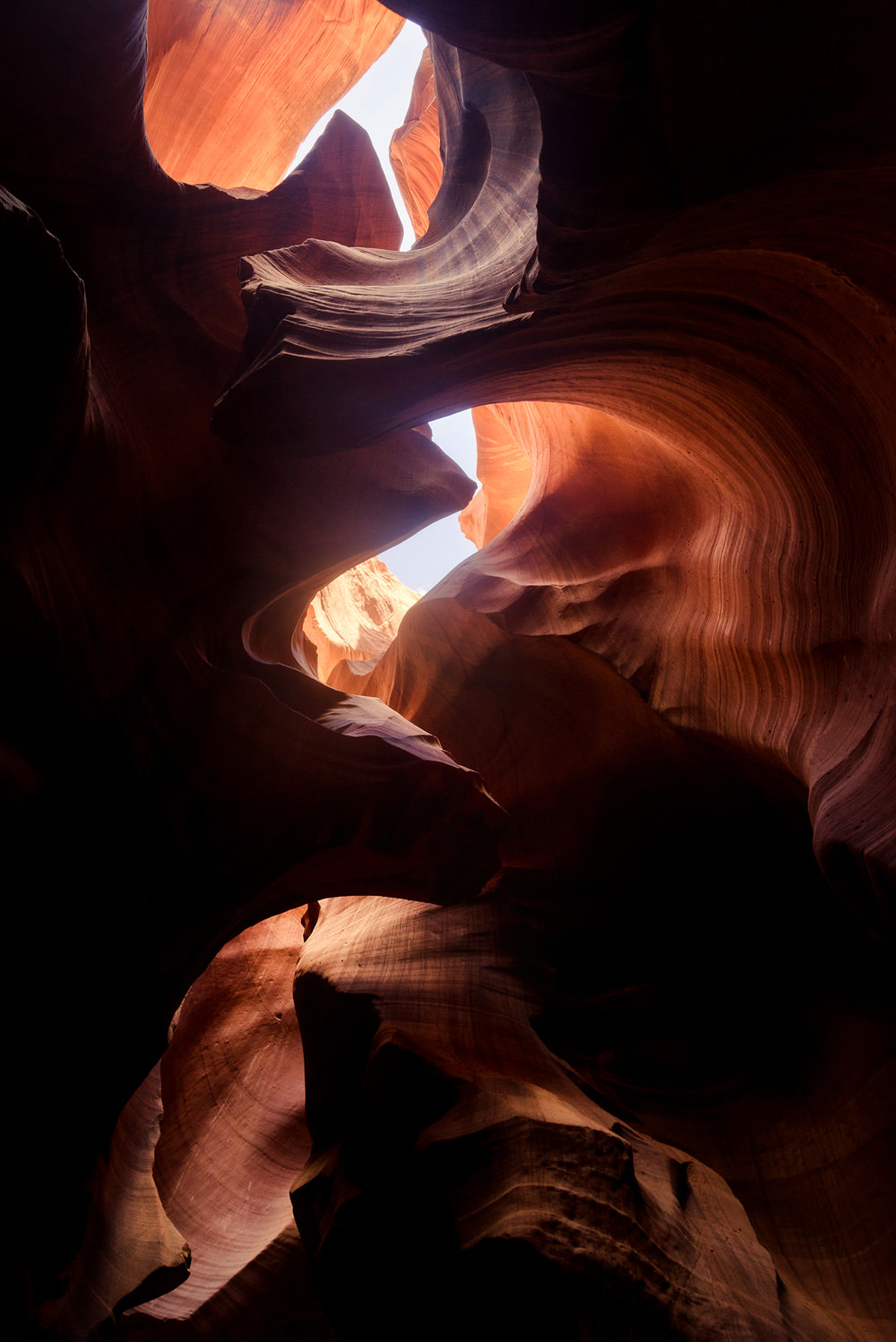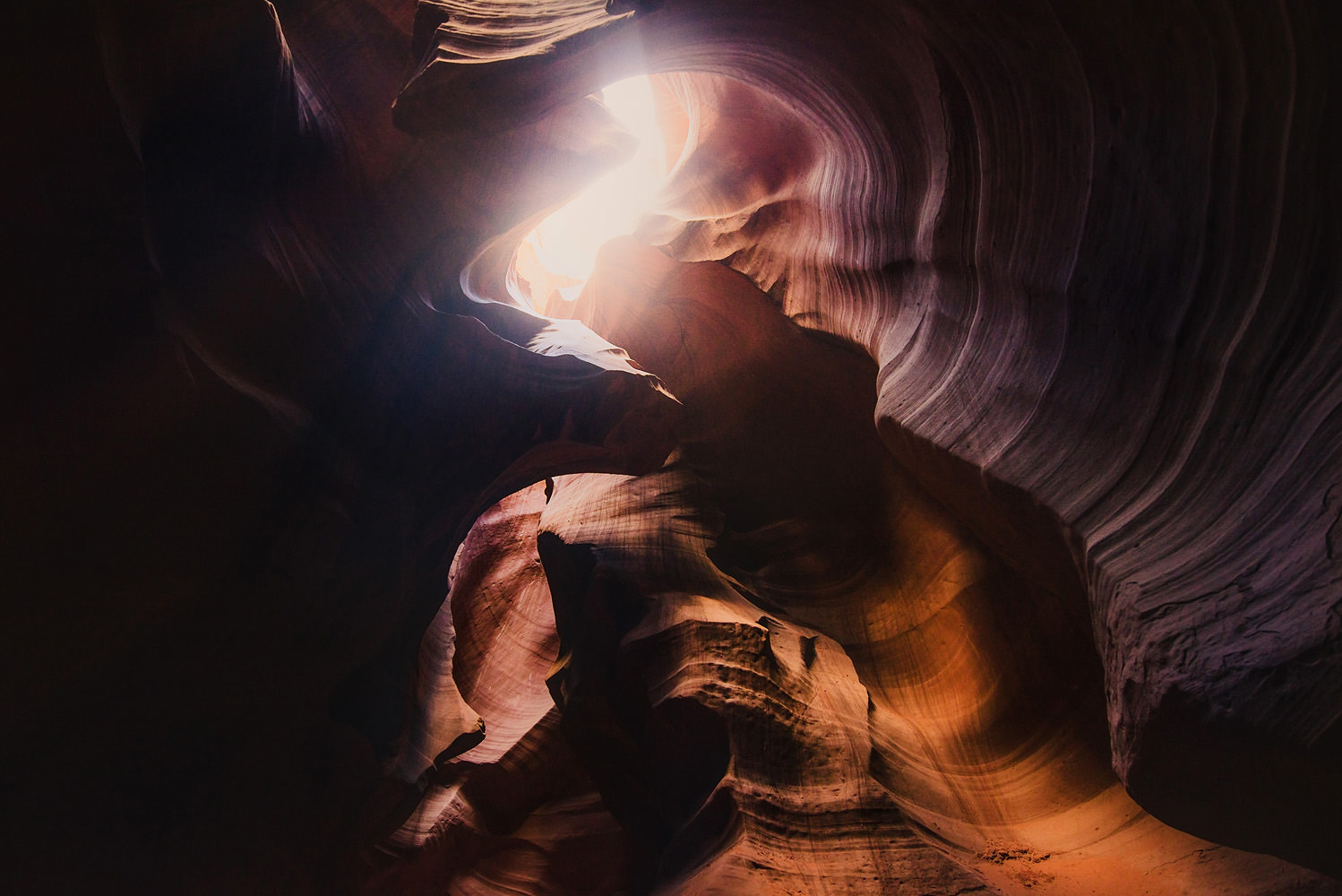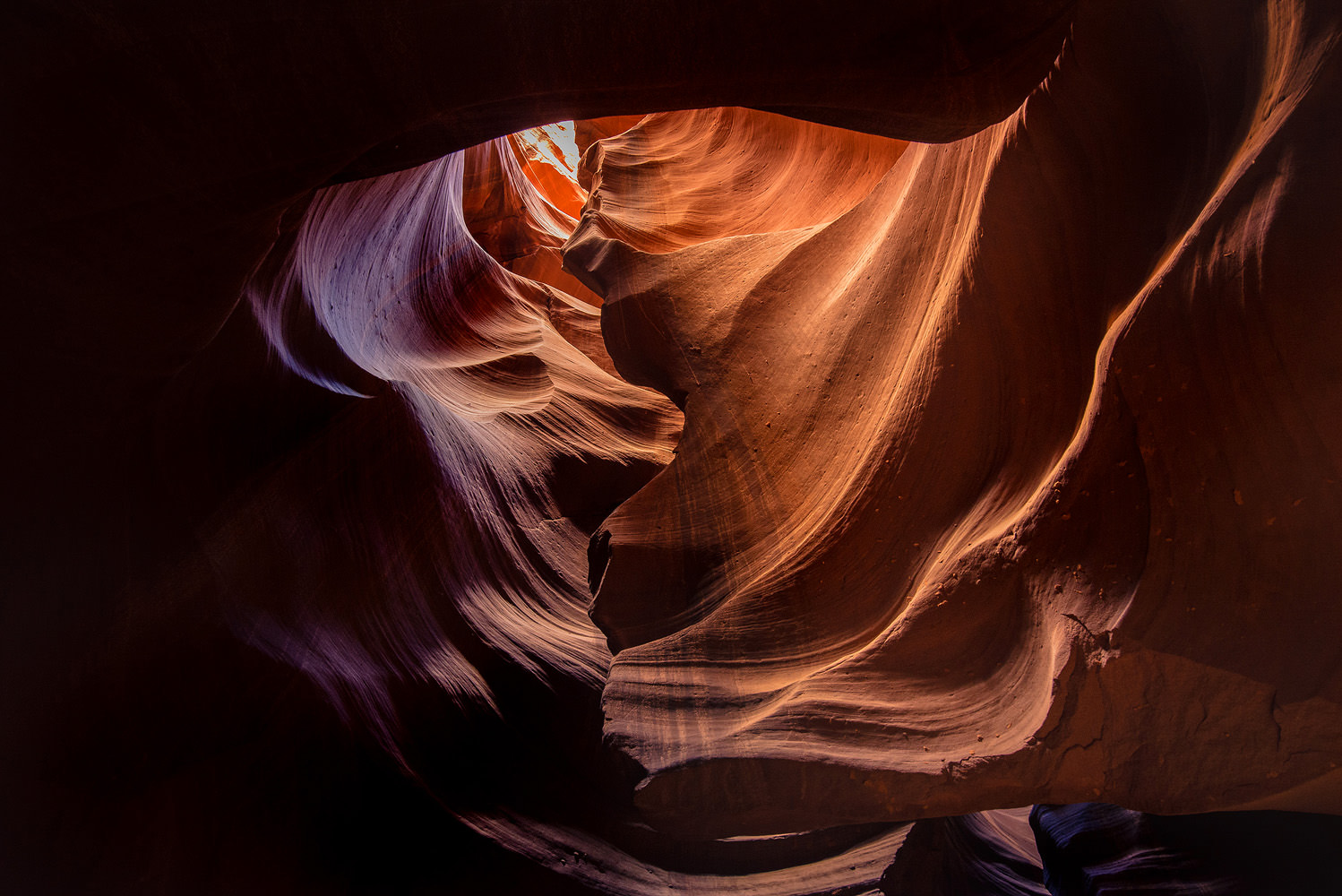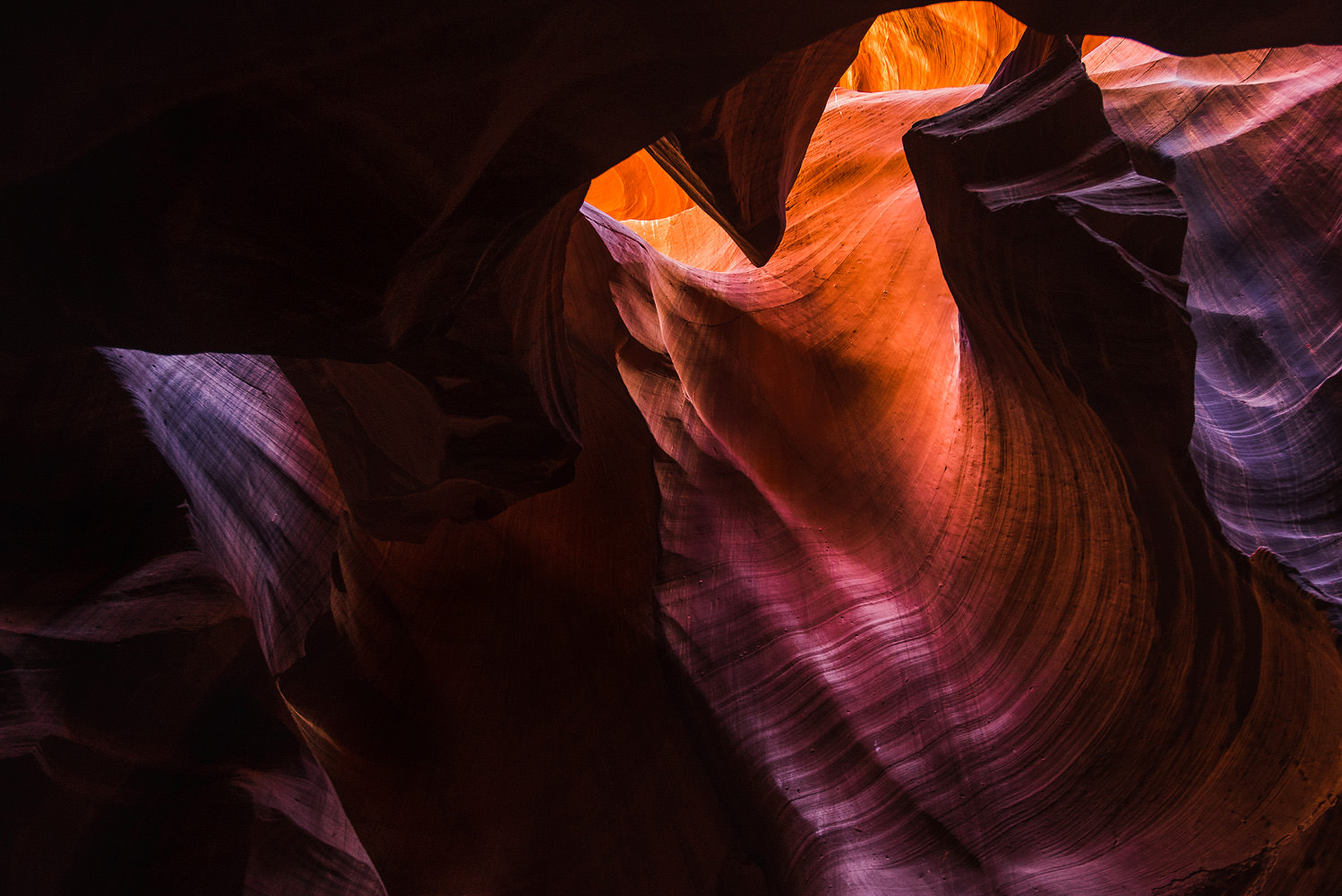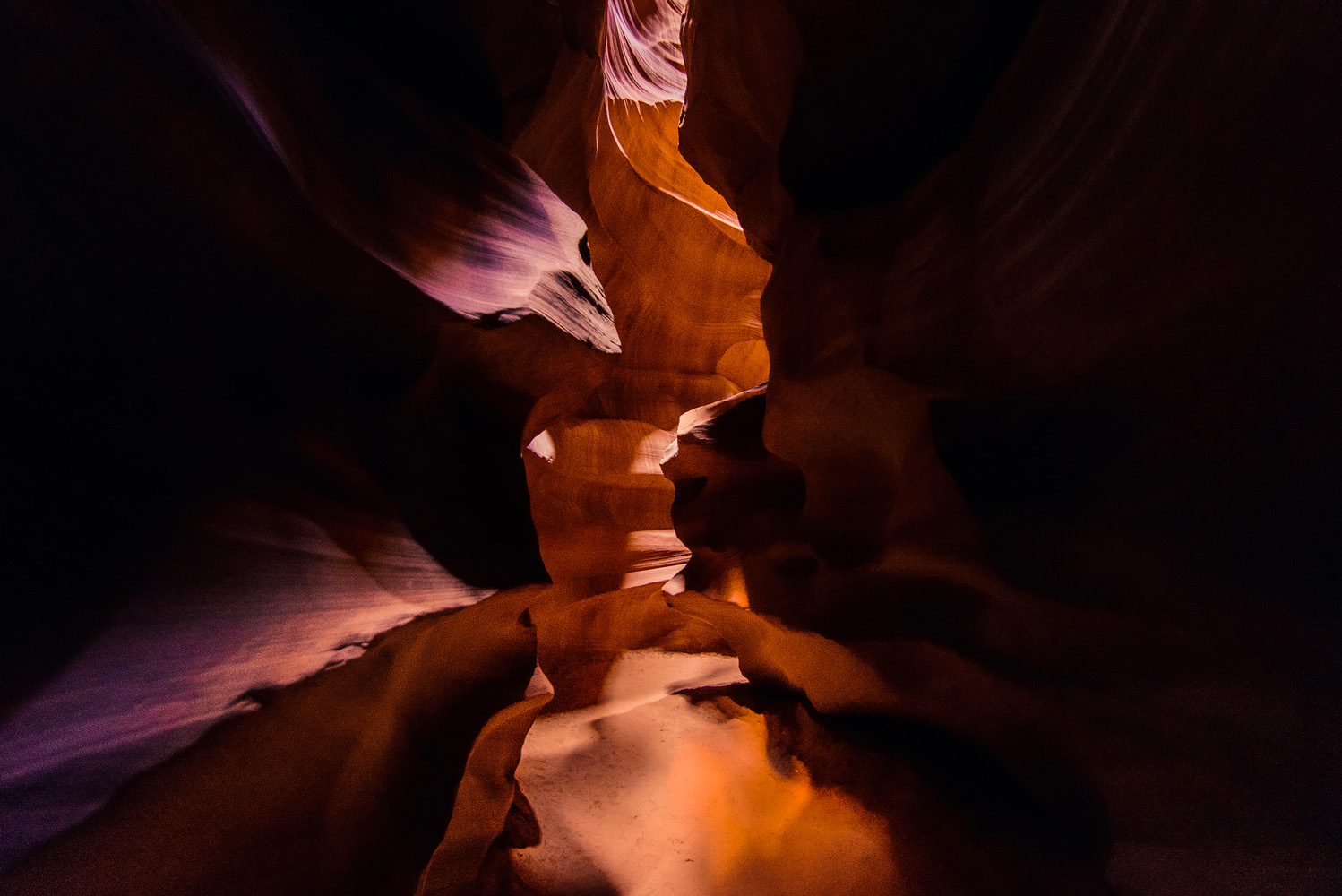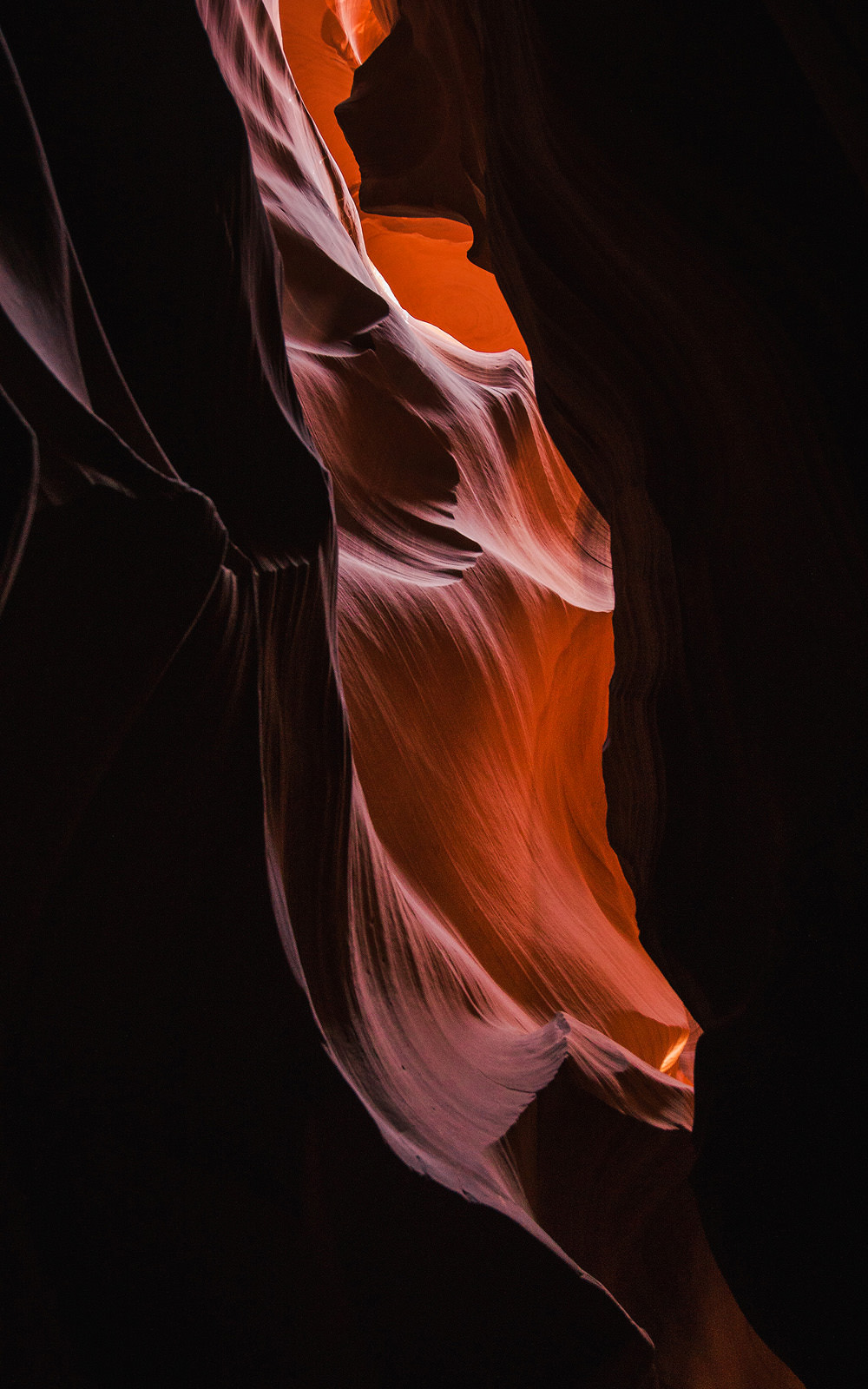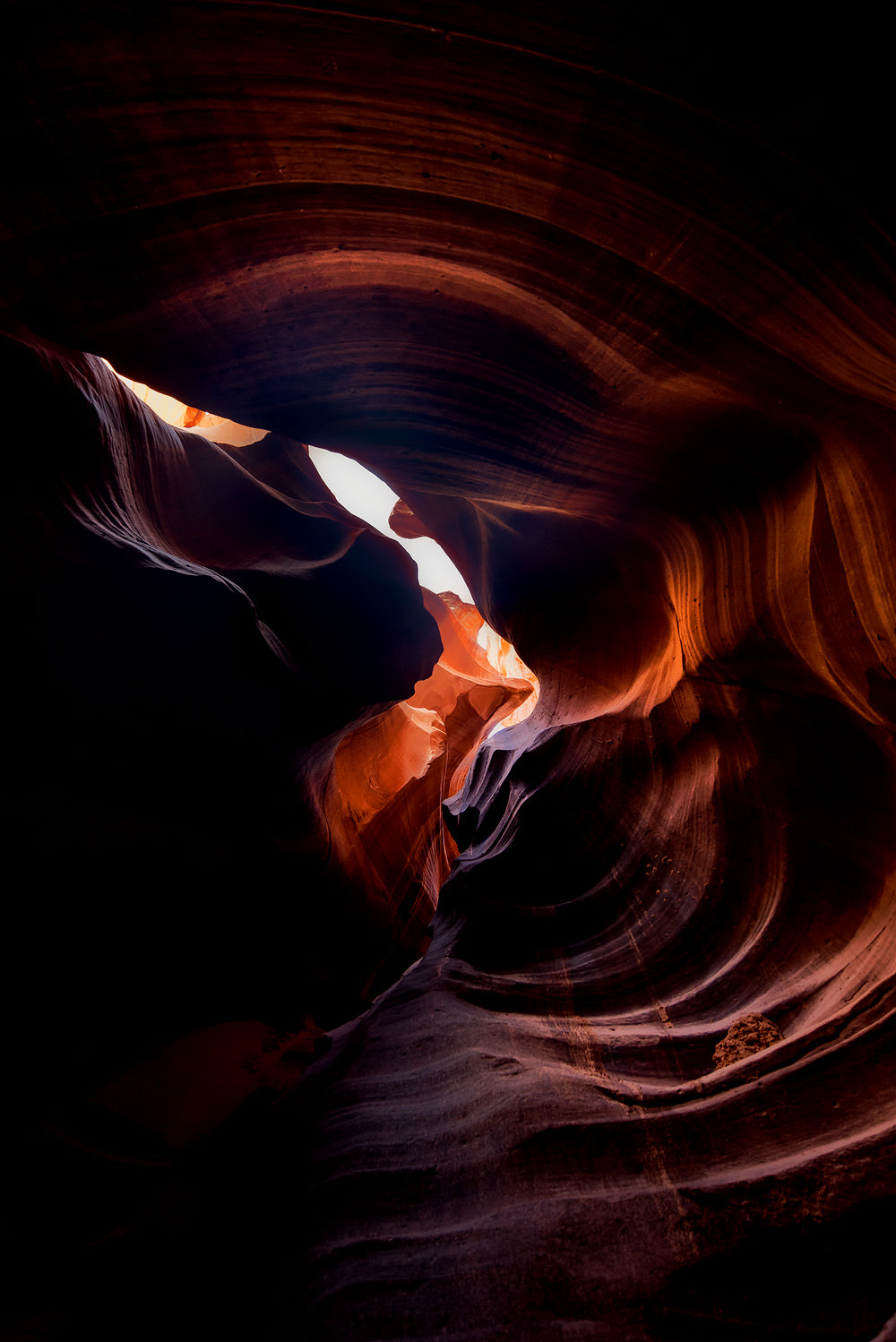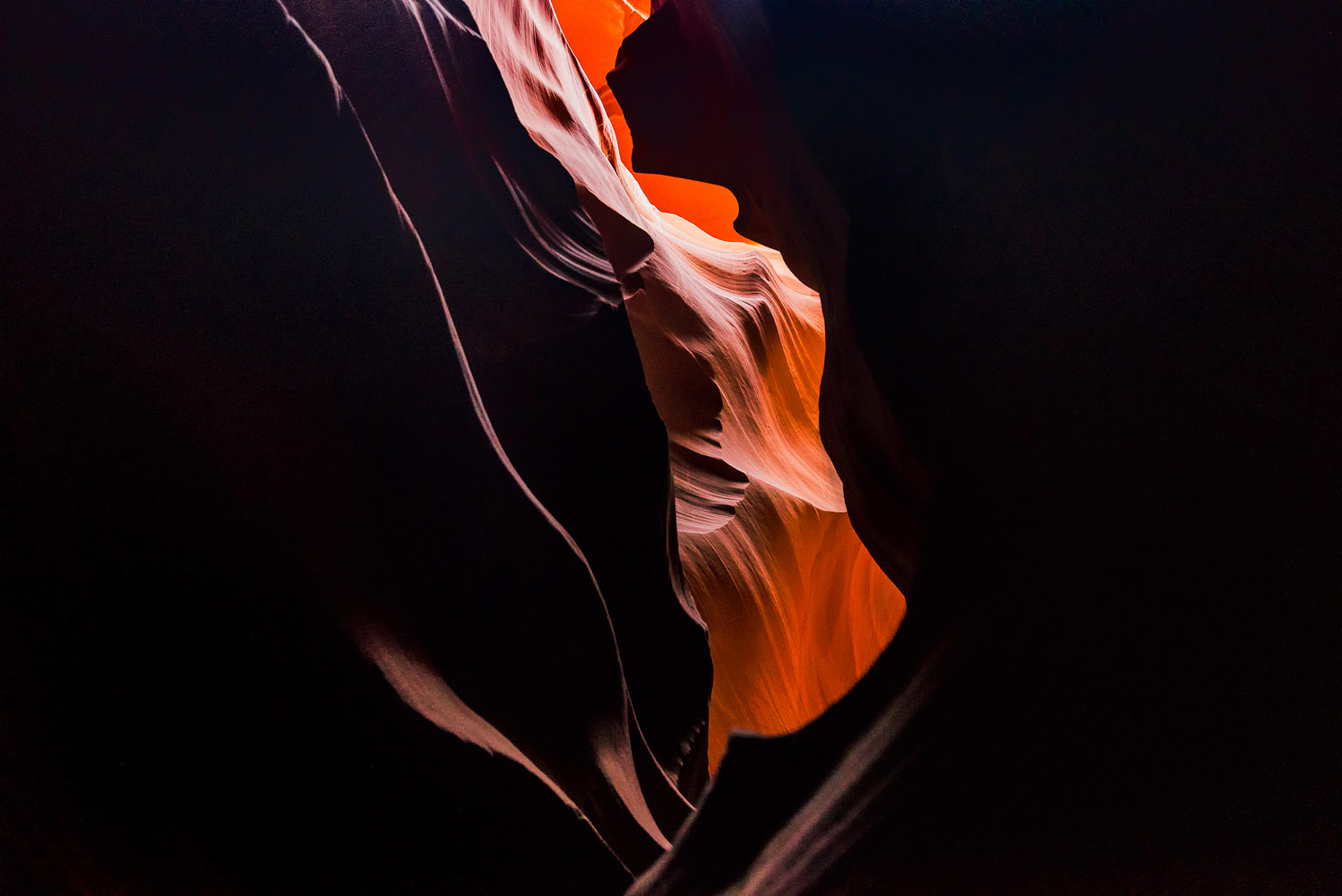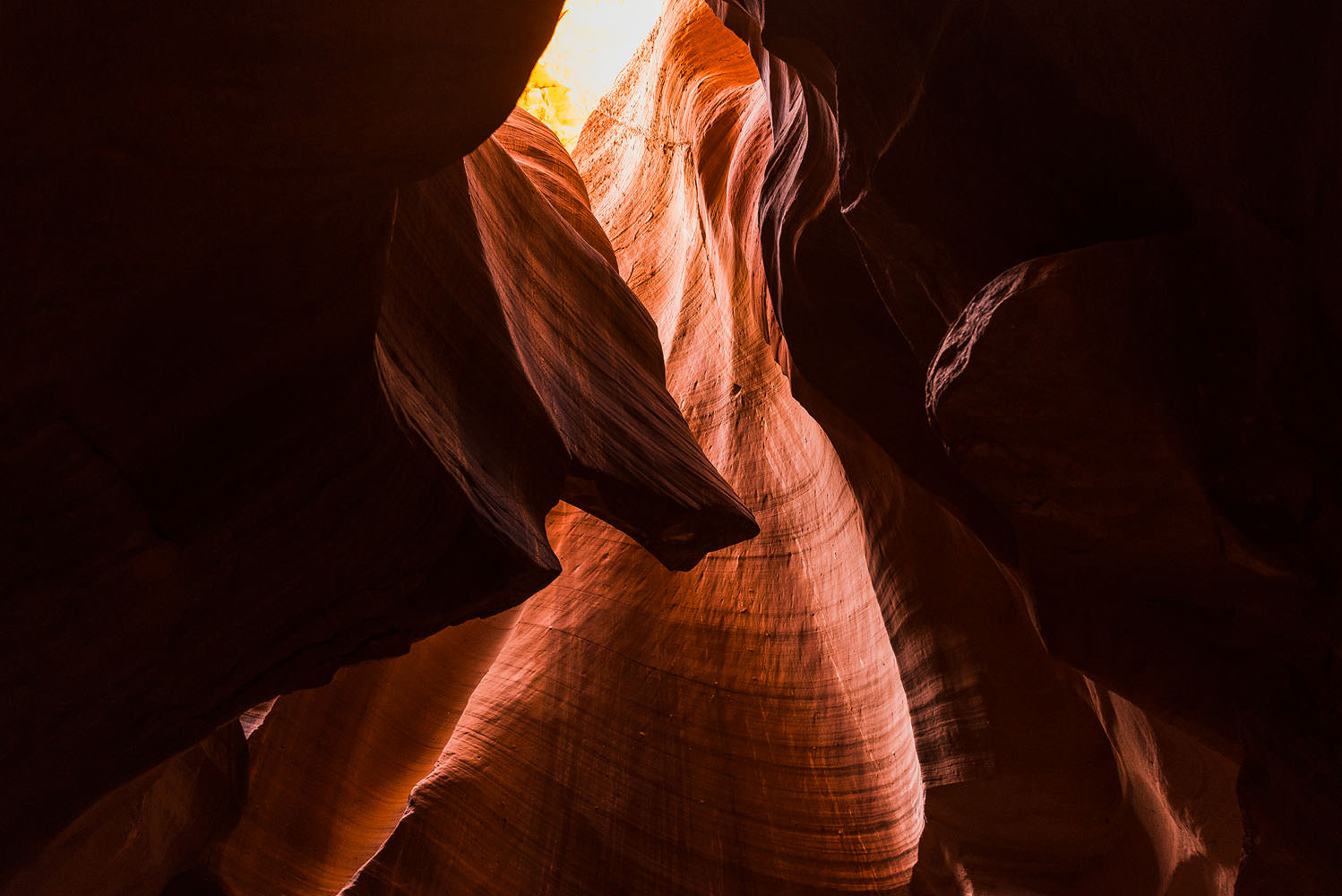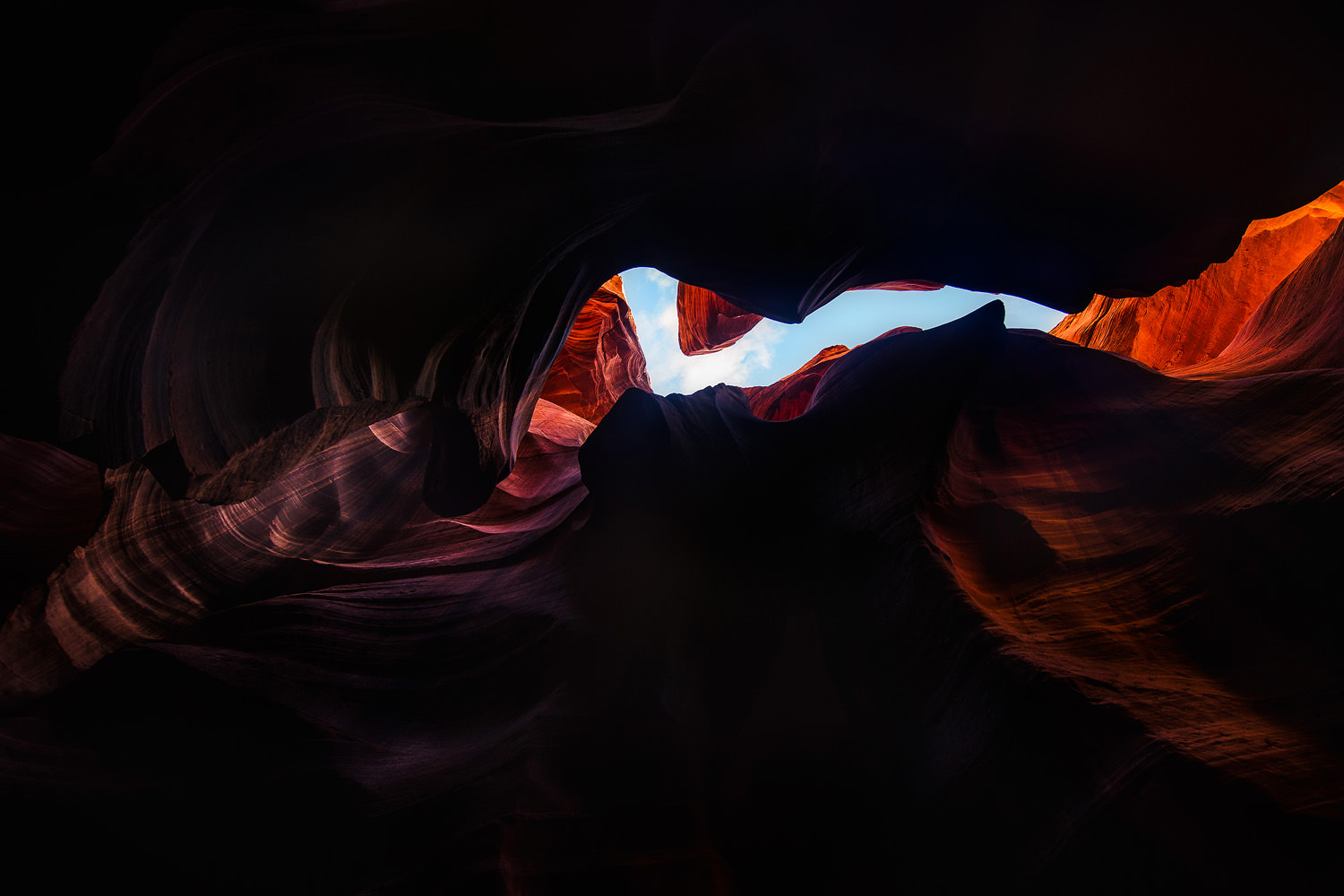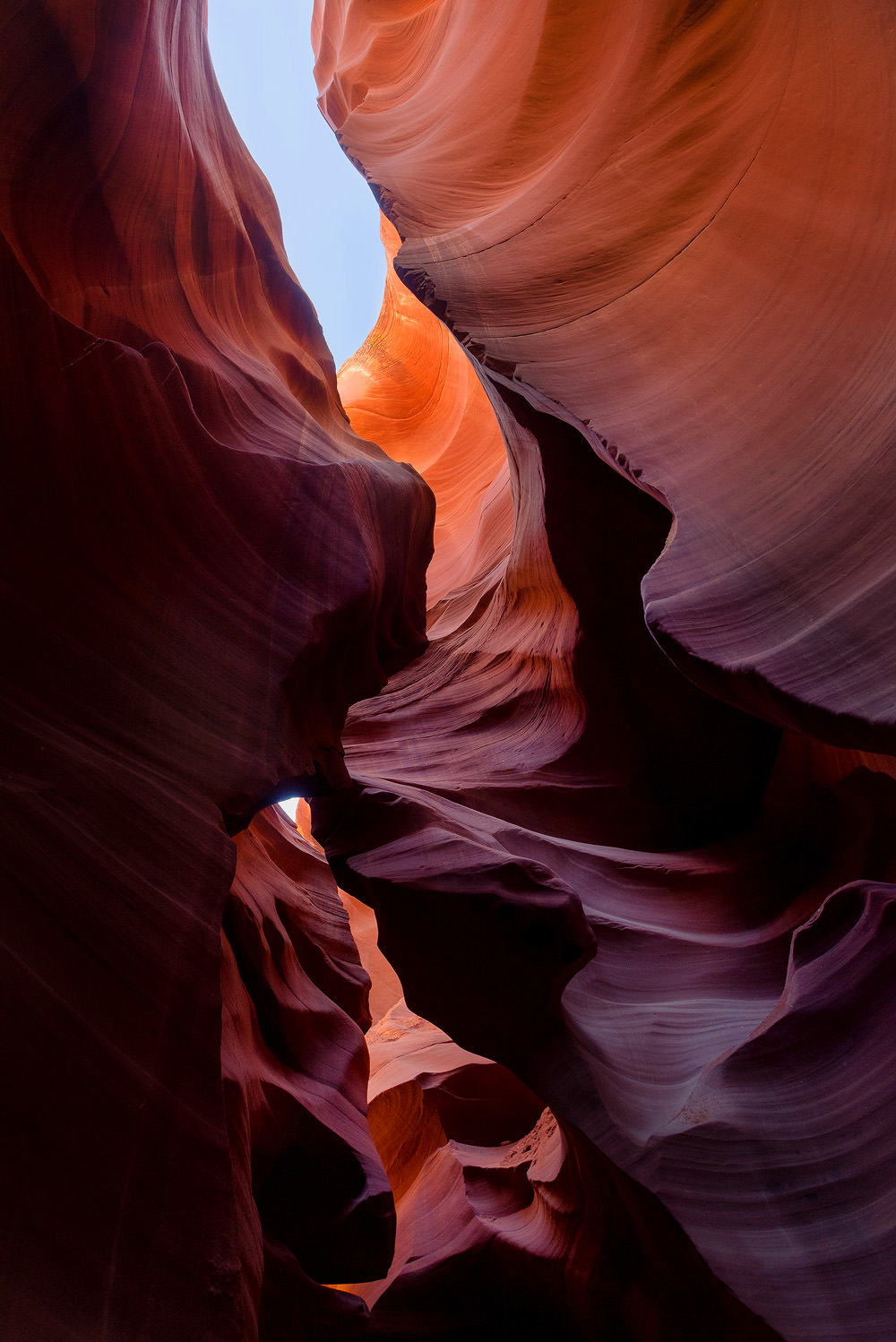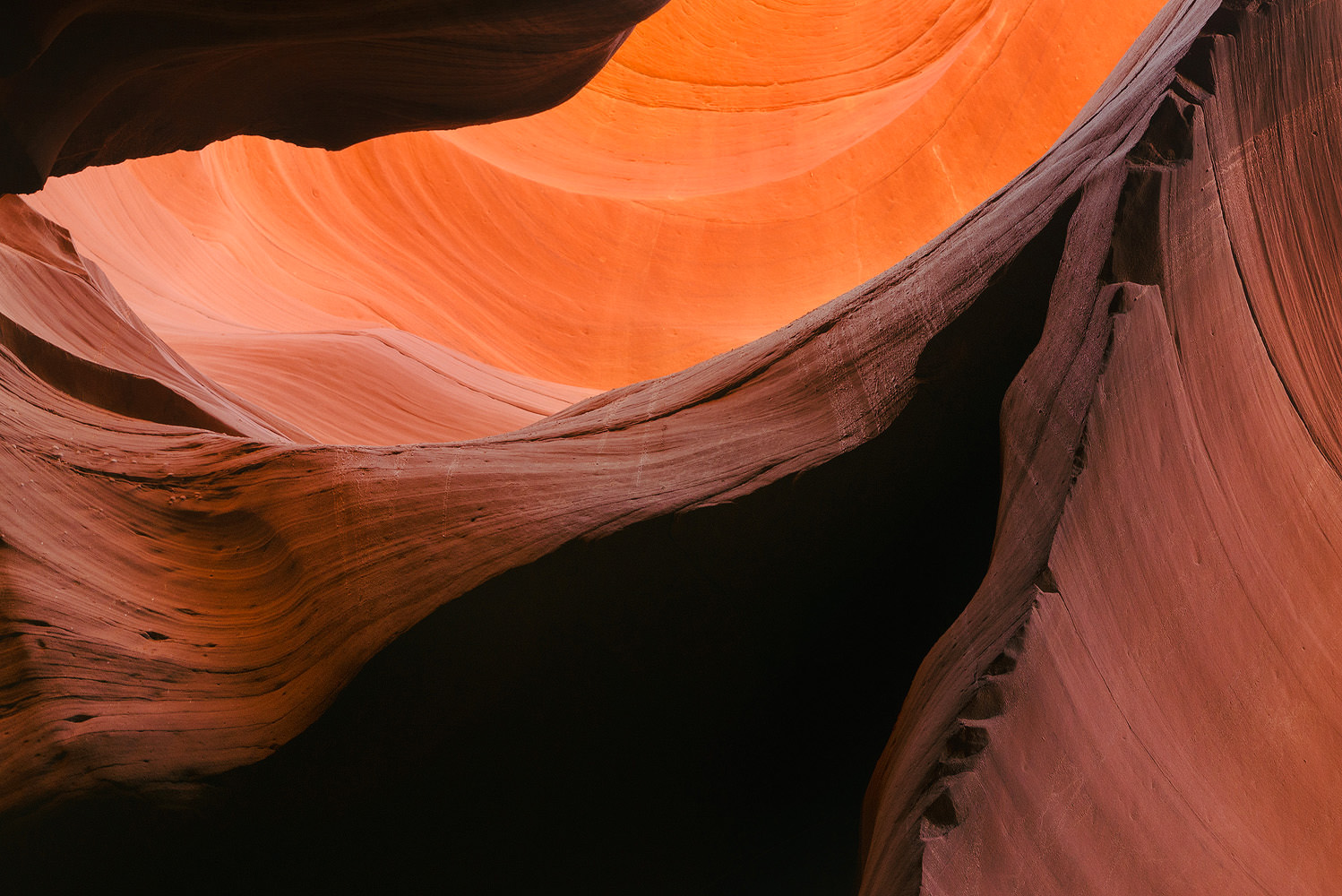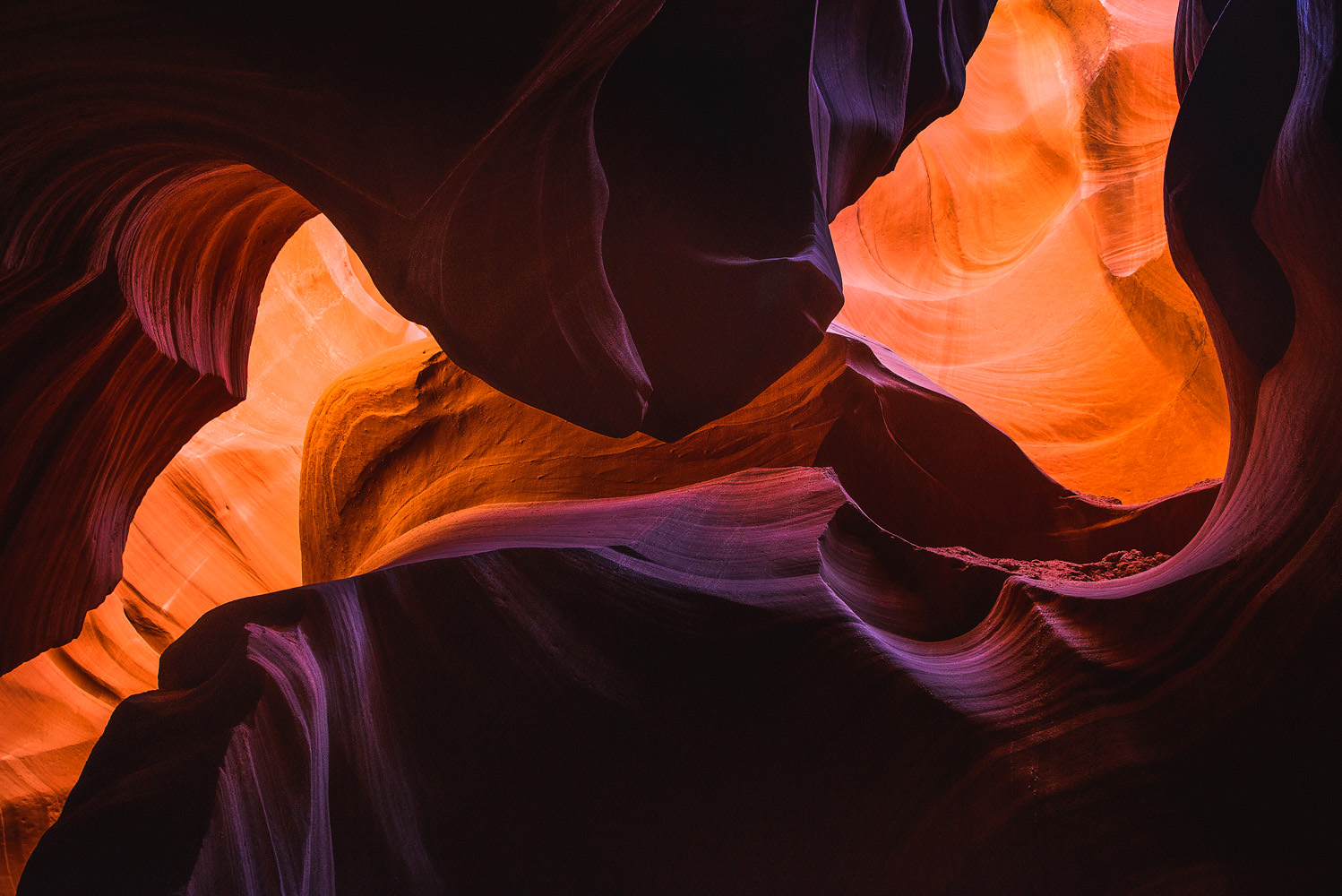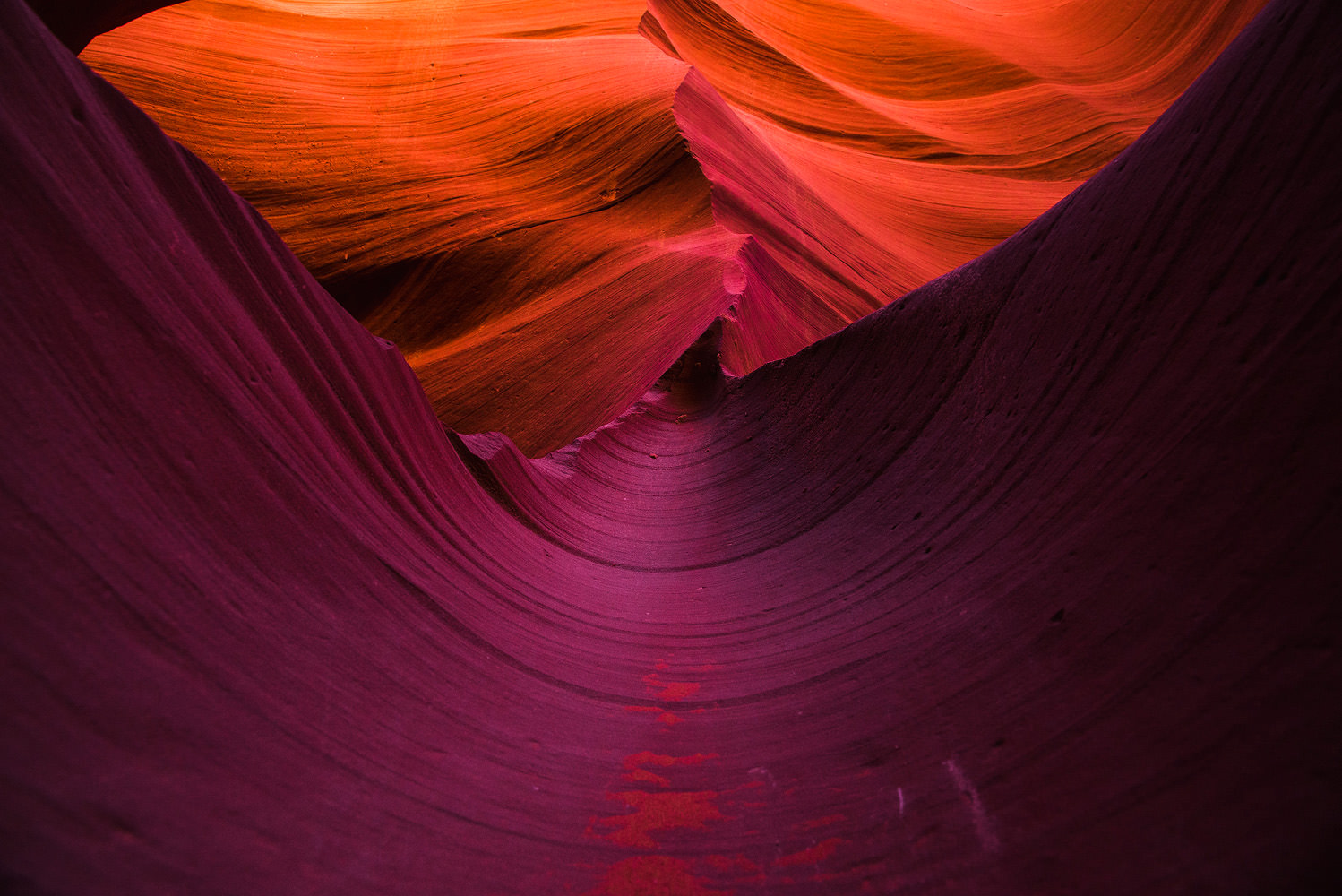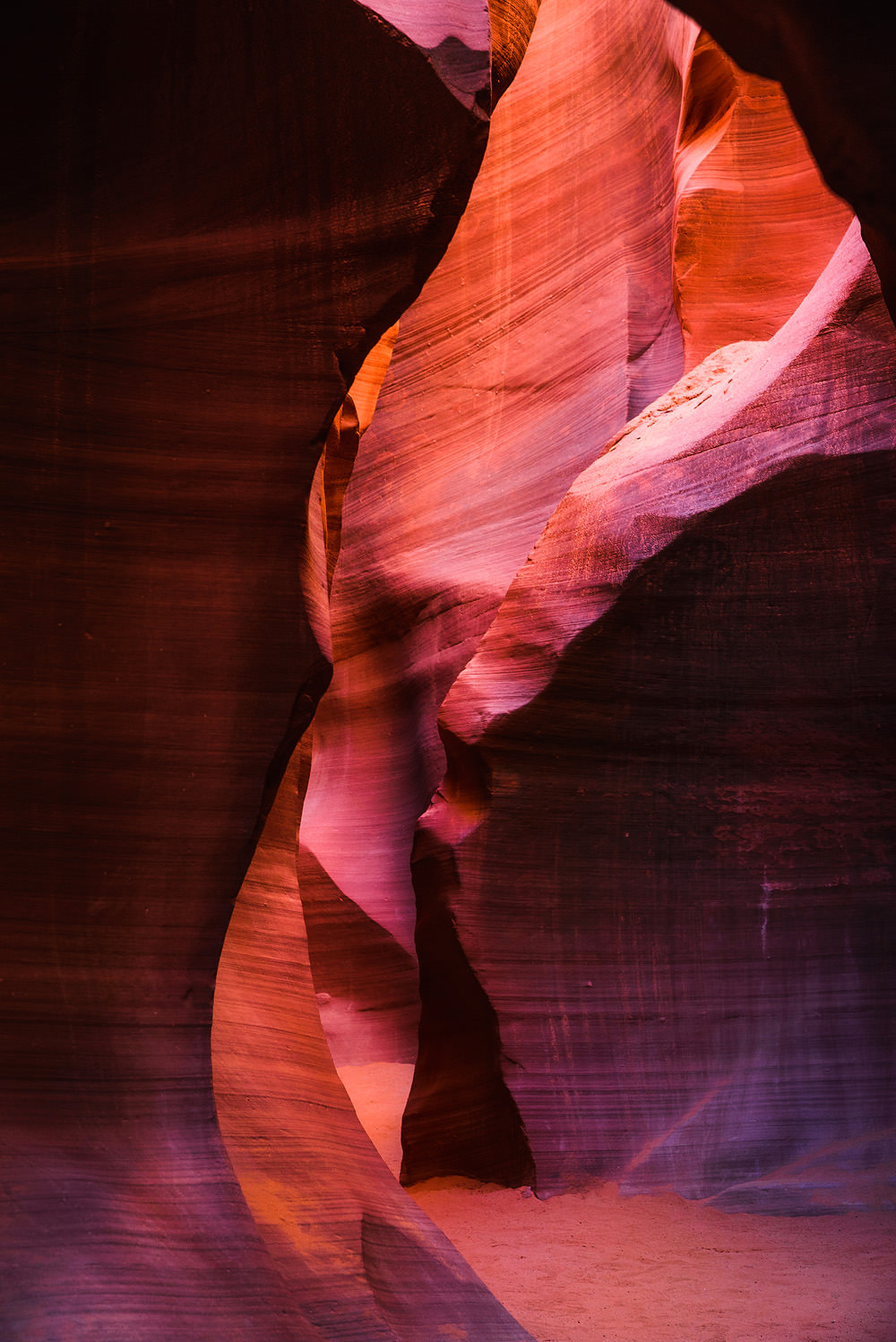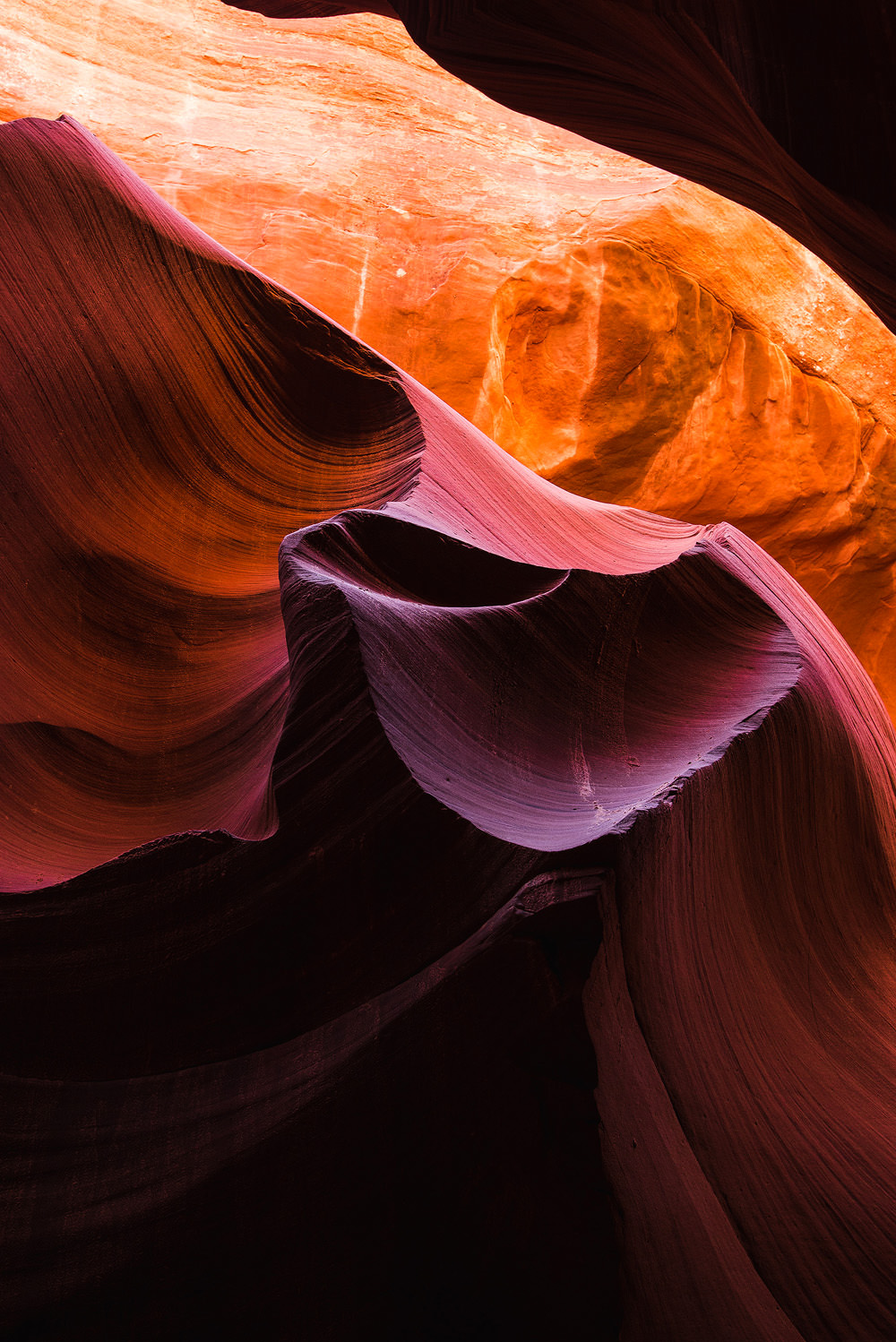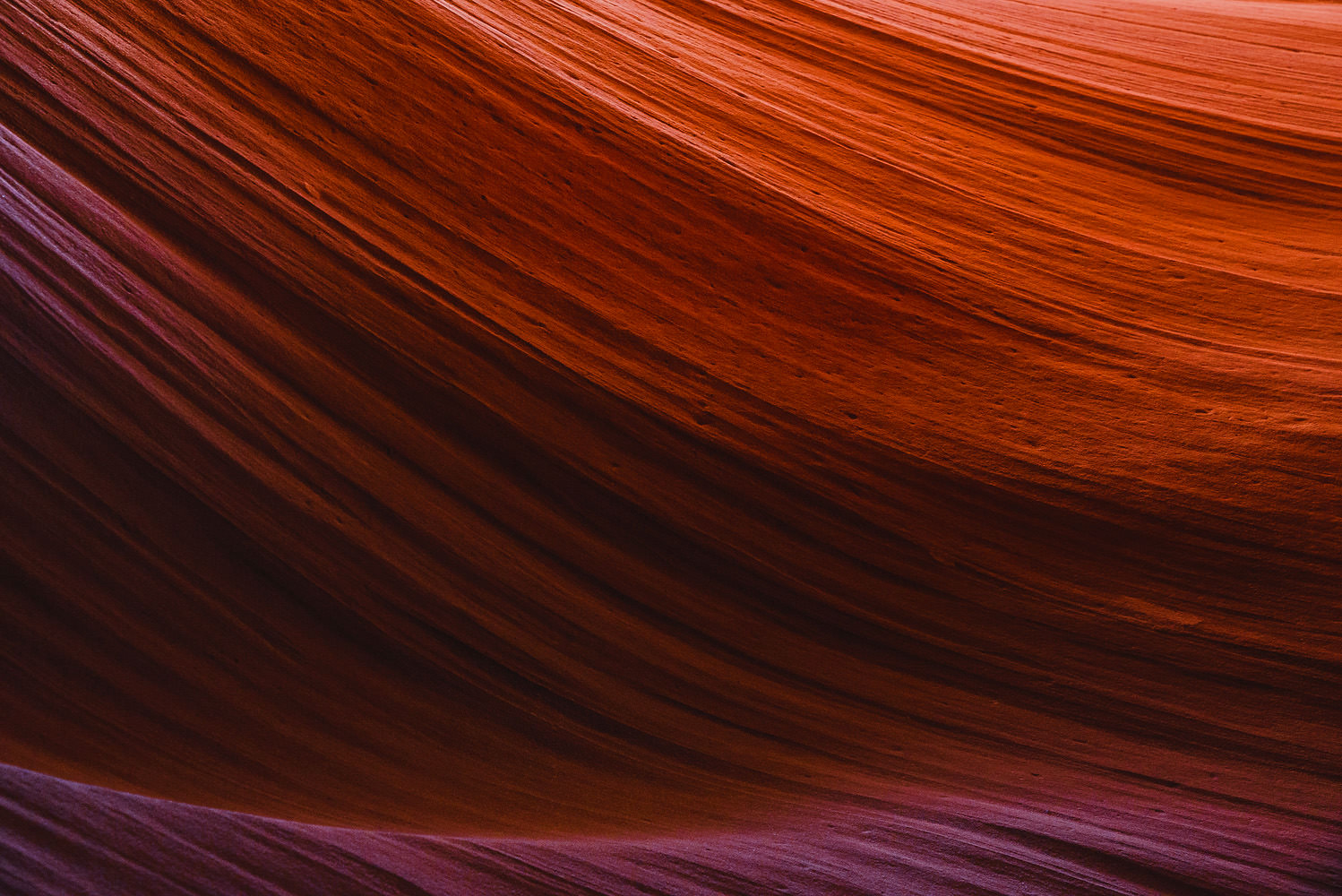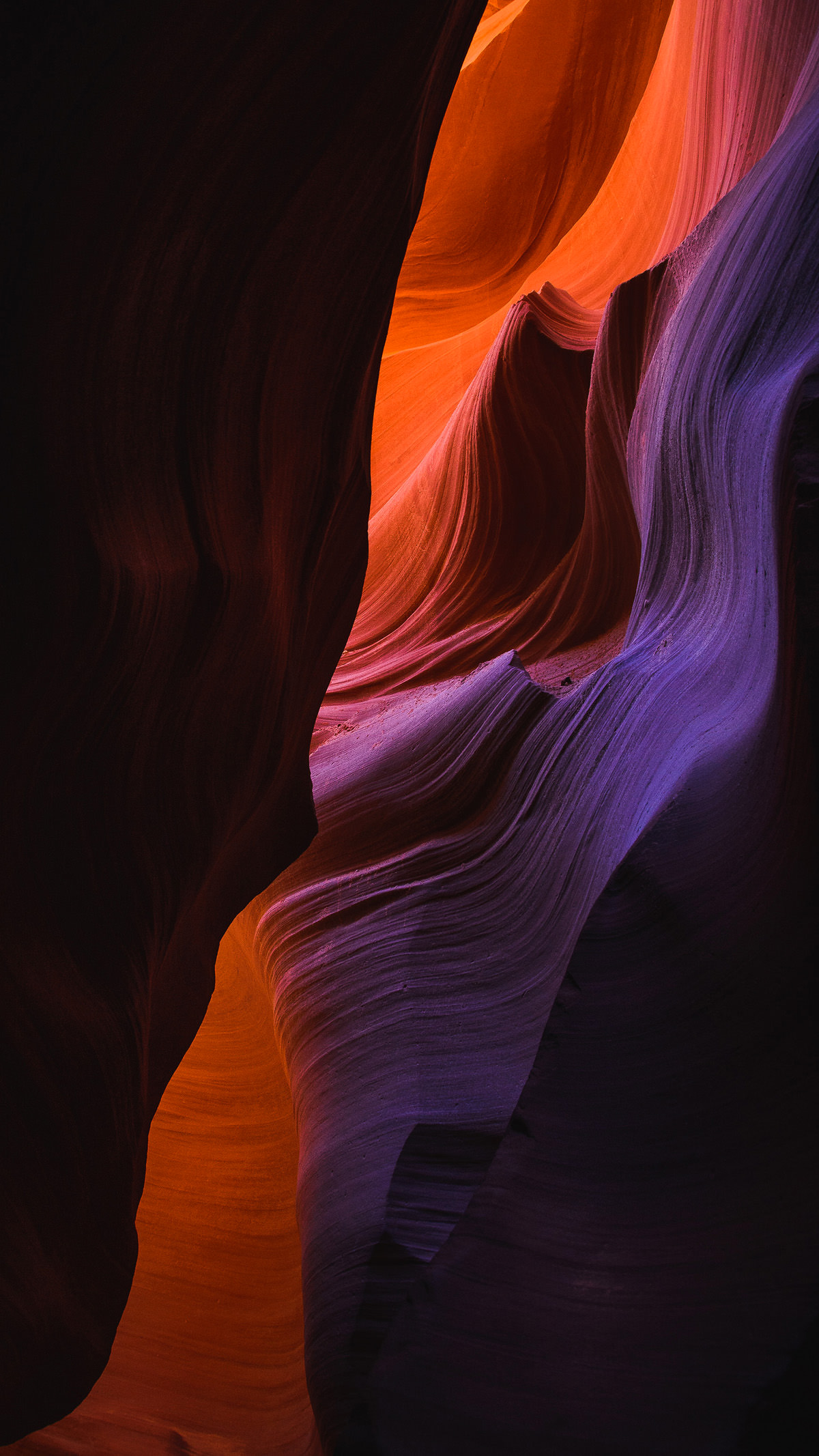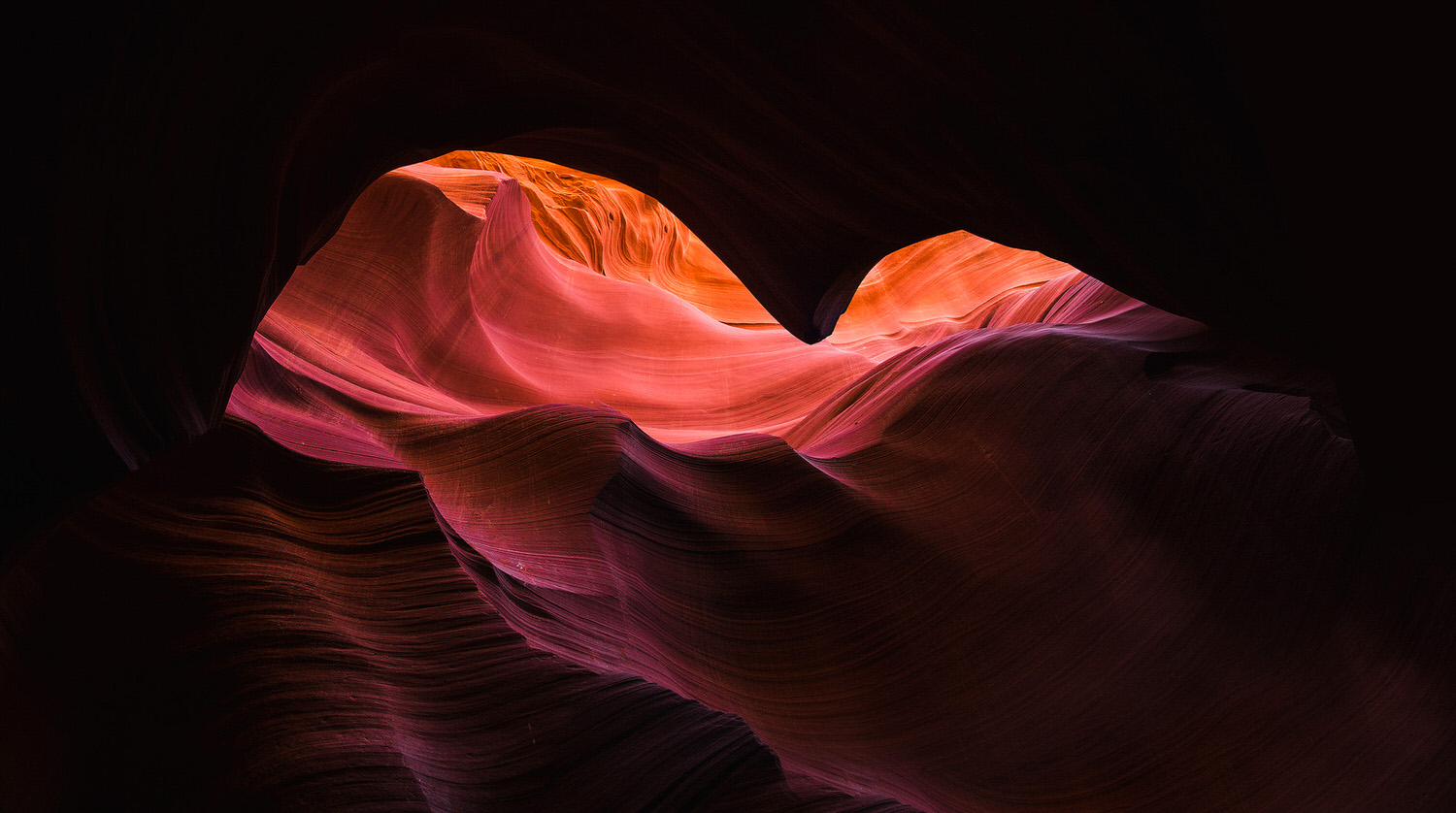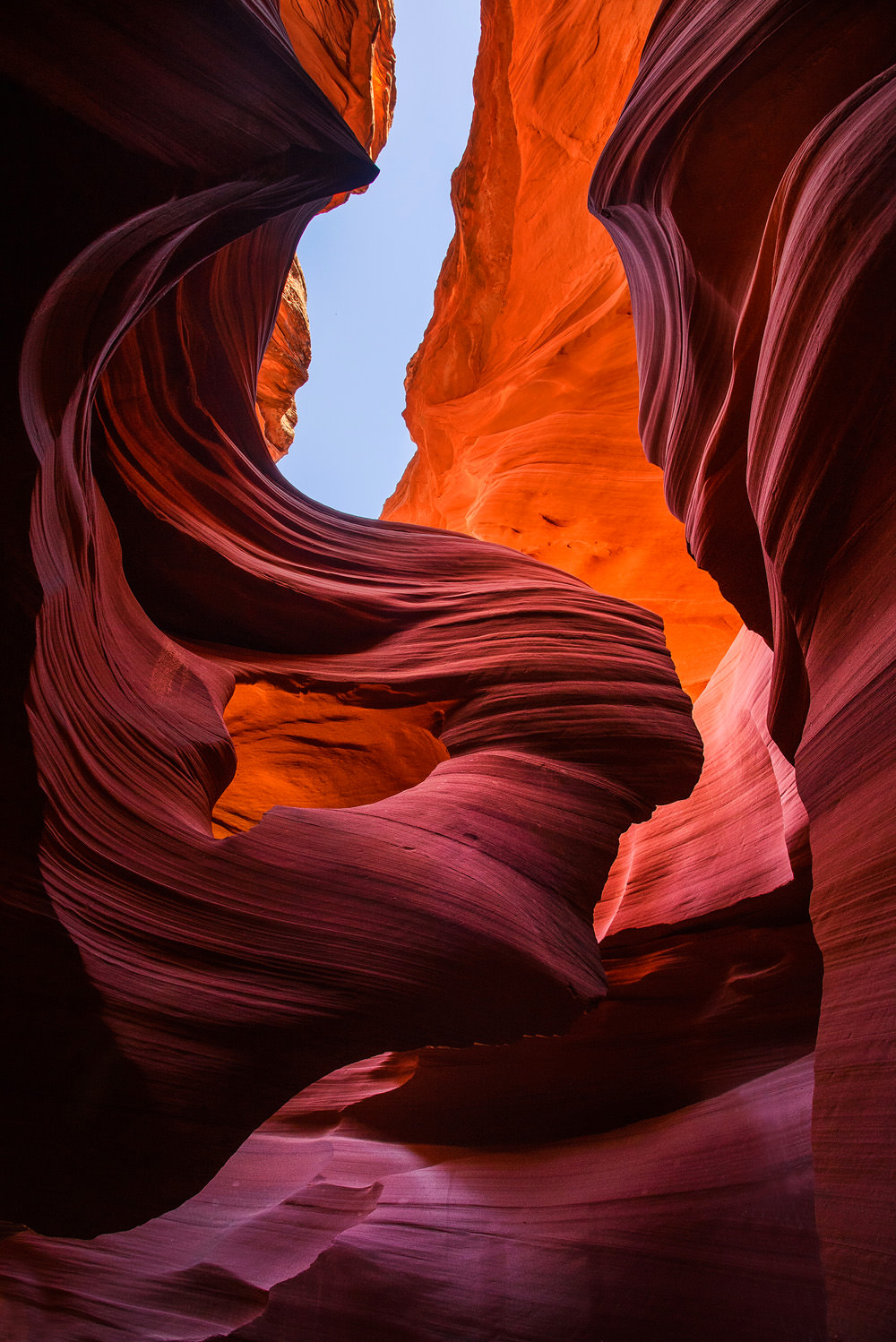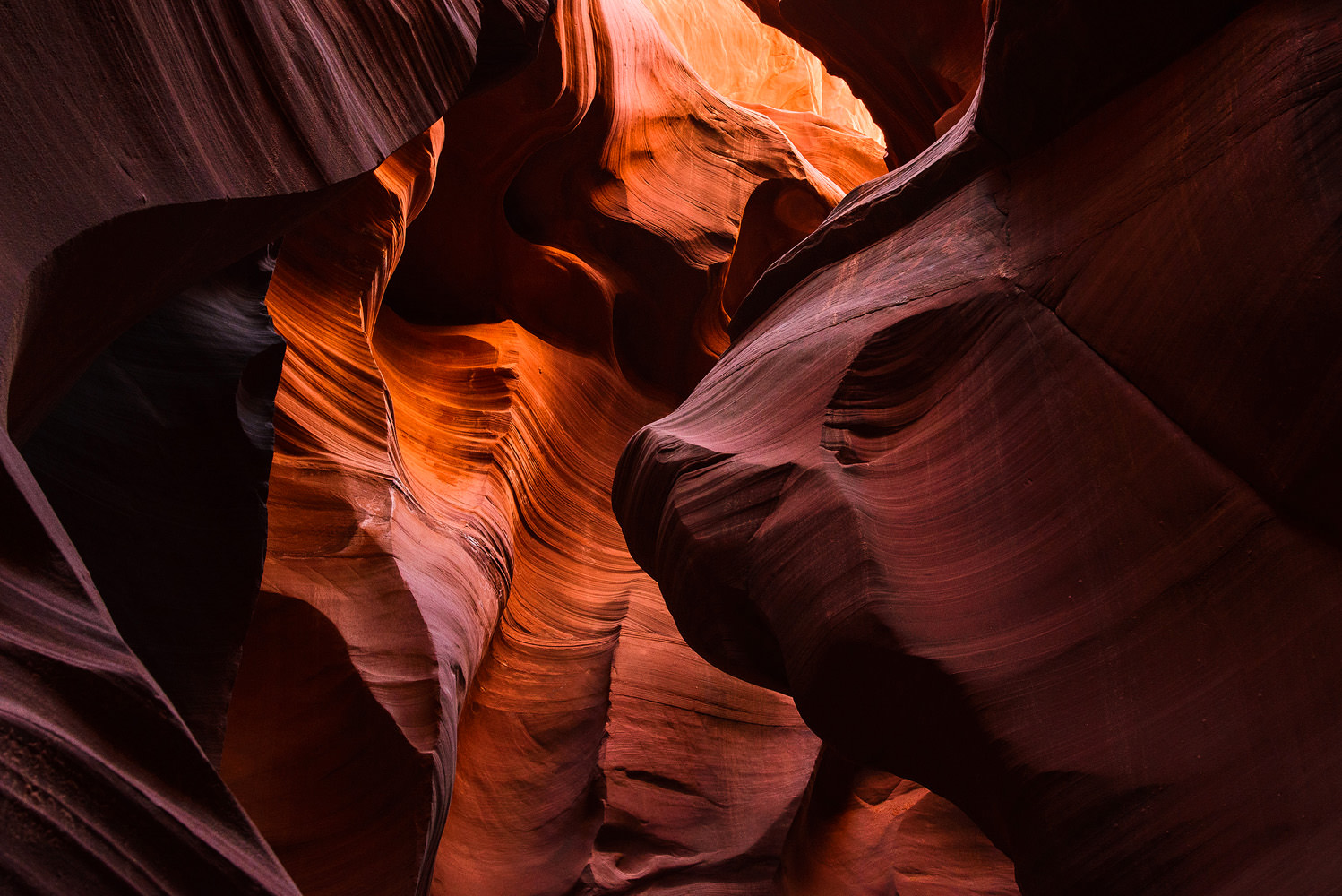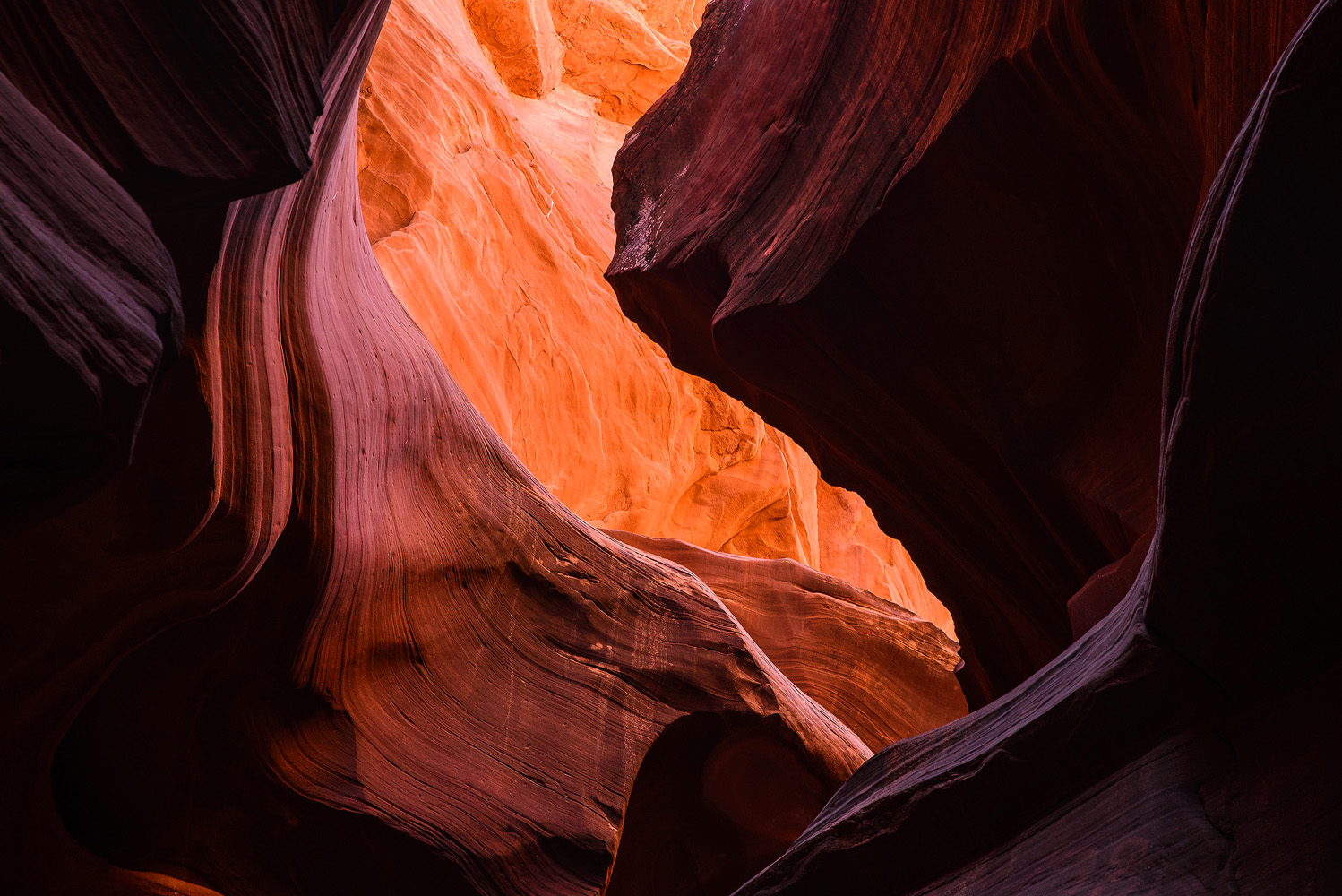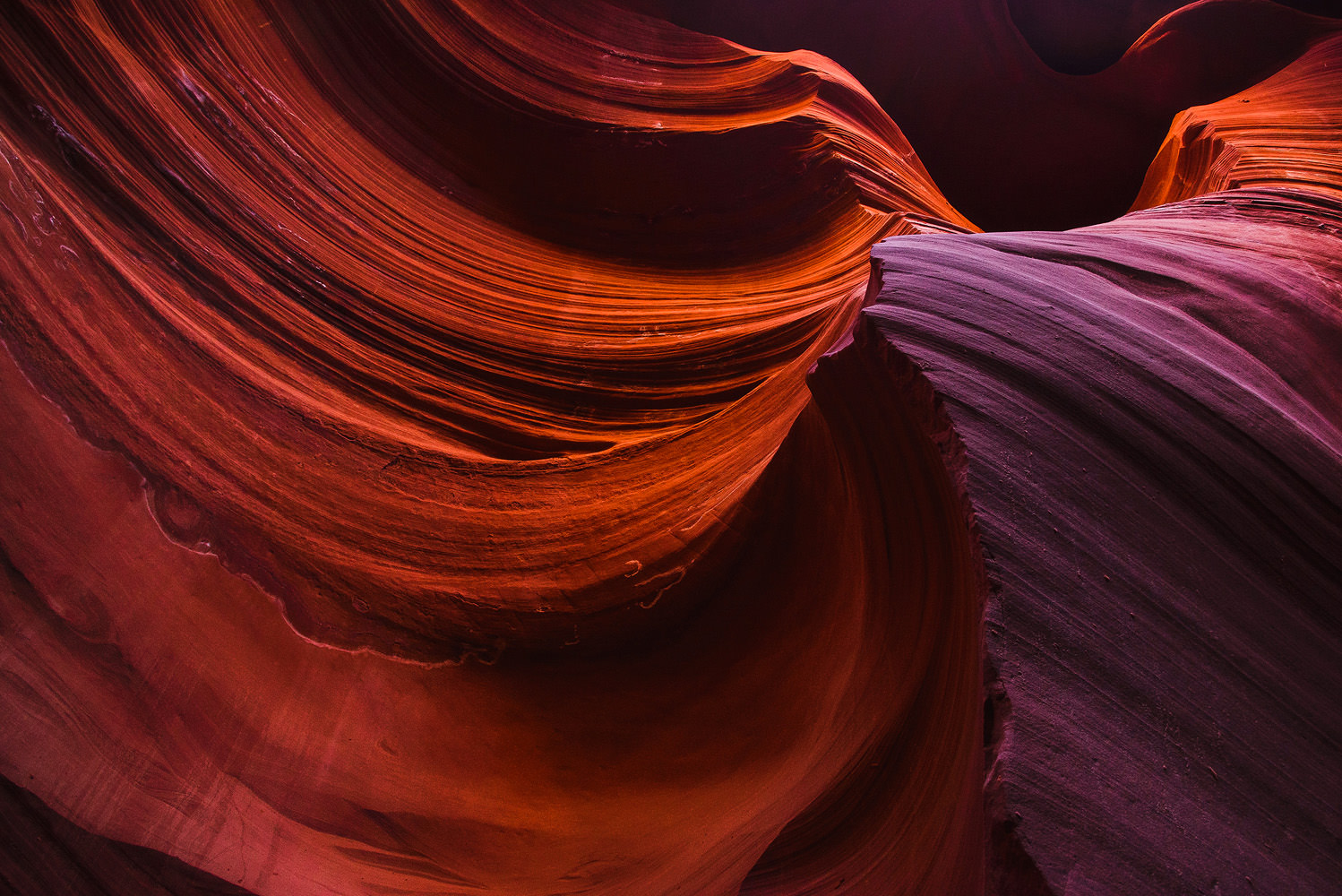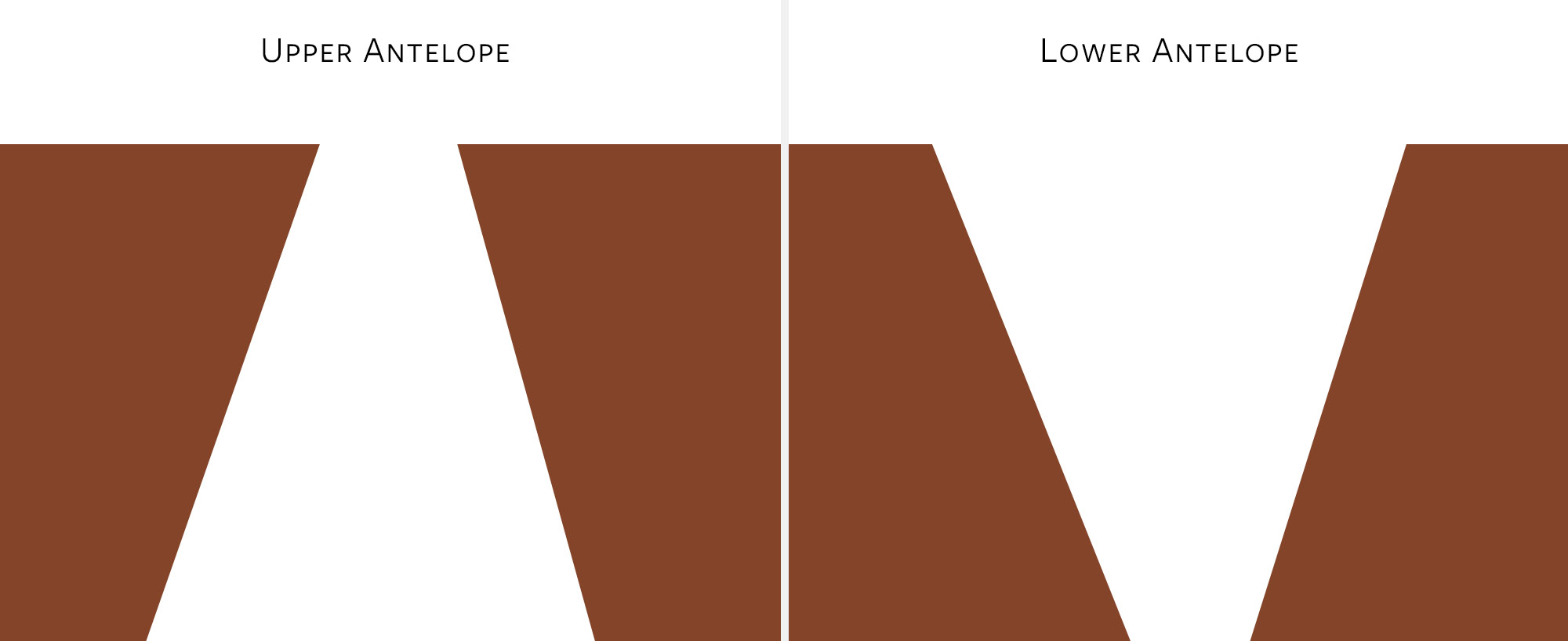Personal // Photographing Antelope Canyon
Antelope Canyon. A location on many photographers’ bucket lists, so I couldn’t let a trip through Page, AZ (check out the other photos from Arizona here) go by without a visit to the renowned Antelope Canyon.
If you're gonna skip the reading (I don't blame you) and head straight down to the images, the first half of the images are from Upper Antelope Canyon and the second half (shortly after where Julie makes an appearance) are from Lower Antelope Canyon.
Antelope Canyon is a slot canyon located just outside of Page by the Arizona/Utah border. As far as what’s visitable, it’s broken into two distinctly different sections, Upper and Lower. The primary difference, from a topographical and photographic standpoint, is their shapes. Upper Antelope is an A-shaped canyon while Lower Antelope is a V-shaped canyon.
My terrible graphic to demonstrate the differences of Upper Antelope Canyon and Lower Antelope Canyon
Their shapes greatly affect the way light enters and visually sculpts the canyon walls and sandstone textures. Upper Antelope Canyon is most famous for its stunning light beams created by sunlight shining through narrow passages juxtaposed with the contrast of the canyon shadows. Unfortunately timing and availability didn’t allow for an opportunity to capture the light beams, since it’s only visible mid-day when the sun is high in the sky and shining directly down into the canyon.
Lower Antelope on the other hand, allows for a lot more light to enter, and this light bounces off and around the sandstone walls resulting in beautiful reflected light of varying hues to paint scene.
The difficulty was both artistic and technical. Shooting in low light is not foreign territory for me, however, shooting low light landscapes with no tripod (anything to support my camera/elbows for stability for that matter) and minimal time to compose and check my images certainly was.
While the canyons aren’t pitch black or anything, they’re certainly dim, Upper Antelope especially. In the darker sections of Upper Antelope, I found myself struggling to balance keeping my ISO low to maximize dynamic range and detail, keeping my shutter speed fast enough to capture a sharp image, and dialing in a proper aperture to ensure my foreground and background elements were in focus. There’s not a lot of wiggle room when you’re underexposing at 1/25, f/5.6, ISO 3200. Combined with the intense dynamic range, especially in spots where the sky was visible from below, bracketing was a necessity and exposure bracketing by hand looking straight up doesn’t always work out. Lower Antelope was a lot friendlier to shoot handheld, as I was able to get solid exposures at around 1/30, f/11, ISO 800.
Technical components aside, what was really difficult for me was finding a great composition with the light conditions and the pace in which we were moving through the tour. One part of my brain is listening to our tour guide to learn a thing or two and to make sure I’m moving along with the pack as instructed, while another part of my brain is working to analyze the scene and light, trying to find a composition anywhere from the ground up free of wandering tourist heads/limbs.
In Upper, I wanted to get a shot that demonstrated scale and depth of canyon, but I unfortunately couldn’t do it with a composition I loved and I’m not sure how feasible it is to capture while on a standard tour. I fixated a lot of time trying to find the large scenes in Upper, realizing my mistake after the fact, but luckily had an opportunity to focus on the details on our visit through Lower. The one thing I wish I could have done differently would have been to bring a stabilized lens to Upper. I elected for a light ultra-wide (18-35mm f/3.5-4.5G) which isn’t stabilized, and while ultra-wides are generally more forgiving when it comes to slow shutter speeds, I did not anticipate needing or wanting to go to speeds below 1/10 of a second. The choice of an ultra-wide was also a bit limiting when it came to capturing details and interesting compositions. I brought the 24-120mm f/4 VR to Lower and the longer focal lengths was great for picking out and isolating the shapes and colors and the VR was awesome to have.
While they’re both cool places to see, I’d be remiss if I didn’t broach the crowds and experience of visiting these two landmarks. If you didn’t know, both of these canyons lie on Navajo Nation land and are only accessible via authorized tours. Photography tours are offered for Upper Antelope Canyon (no longer for Lower as of 2018 I believe), but they’re incredibly difficult to reserve on short notice so Julie and I elected for the standard ‘sightseers’ tour. Both tours have you in specific time slots in a group of about 15 individuals. The tour groups are decently spaced out, but even on a late Wednesday afternoon (Upper) and the first tour on a Thursday morning (Lower), it kind of felt like we were at a Disneyland standing in line to get in to spend a pre-determined amount of time in the canyon, occasionally bumping into 2-3 other groups as we made our way through the relatively small space.
But, if you can ignore the commercialization of these two specific canyons, they are visually stunning, unique, and extremely accessible.
